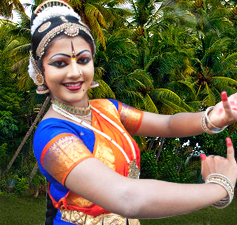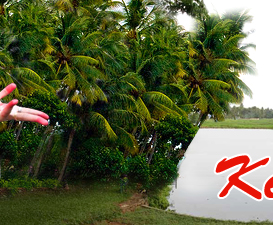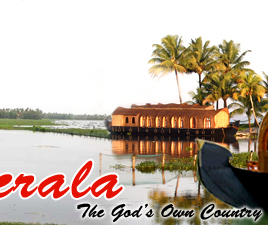Maritime Museum of Kochi (Kerala) is the proud of the Cochin district. It houses a number of rare artifacts related to the history of Indian Navy.
Kerala Tourism : Museums of Kerala : Maritime Museum Cochin
Maritime Museum Cochin
Fast Facts :
| Location | Cochin, Kerala |
| Nearby Attractions | Fort Kochi, Hill Palace, Bolgatty Palace |
| Best time to visit | October to April |
| Nearest Airport/Railway Station | Cochin International Airport / Ernakulam Junction |
India has a strong naval fleet. Its armada is deemed as one of the top marine squads in the world. This depends upon the physical and technical prowess of our navy men. The Maritime Museum at Cochin/ Kochi (Kerala) is devoted to such maritime potential of India. The museum celebrates the devotion, bravery and selfless services delivered by the valiant gentlemen of Indian fleet. Situated at INS Dronacharya in Kochi, Maritime Museum displays the origin, growth and chronology of the Indian Navy. The Maritime Museum at Cochin displays not only the accomplishments of the Indian fleet, but also the representations of some fundamental sailing ploys. These were used by the ancient and medieval sailors during the times when the Indian Navy was not-existent and the Indian coastline was guarded by the kings with the help of a well equipped and trained military force
Maritime Museum Kochi also displays certain evidences that testify the trade relations between the natives of Kerala and the late settlers of Indus Valley Civilization. There are a few displays stored inside the museum which support Kerala's claim of having trade links with the Arabs via sea, Indian Naval influence in South East Asia and the colonization of India by European powers in the medieval period.
Another interesting thing about the Maritime Museum of Cochin is that it exhibits ship building activities. These activities bring forward some interesting facets of ship building in India. Exotic vessels and boats are put on display in this section of the museum. Here, a 300-year old boat of the King of Ambalapuzha is also put on display. The boat is carved out of a single tree, which exemplifies the ship building style of the medieval period. The boat is an exquisite example of the mastery of Indians in shipbuilding, which helped in spreading Indian culture to the islands of Java, Sumatra and Bali. These examples date to the 3rd century BC and the 12th century AD.
A complete section of Cochin Maritime Museum highlights the stories of Indian Navy's glory, whenever it took on its aggressors and ultimately won almost all the battles on water. Other sections stress particularly on the valor and bravado of the Indian armada, which has taken place from the geneses of the Indian Navy till present. The visitors of the museum are enlightened by the artifacts, each of which tell the story of evolution of the Indian Naval power from the year 1612, when the Indian Marine was established in Surat. A number of operations and battles are comprehended here, a few of which include the Goa liberation, Junaghad operation, Operation Cactus, Operation Pawan Indo-Pak conflicts of 1965 and 1971, and the tactical drills during the Kargil war. An exclusive hall is dedicated to bravery and strategies in the memory of Kunjali Marakkar which is a legendary name in the history of Indian maritime. He was the most glorious wartime hero ever in history of Indian Navy.
Maritime Museum Kochi also displays certain evidences that testify the trade relations between the natives of Kerala and the late settlers of Indus Valley Civilization. There are a few displays stored inside the museum which support Kerala's claim of having trade links with the Arabs via sea, Indian Naval influence in South East Asia and the colonization of India by European powers in the medieval period.
Another interesting thing about the Maritime Museum of Cochin is that it exhibits ship building activities. These activities bring forward some interesting facets of ship building in India. Exotic vessels and boats are put on display in this section of the museum. Here, a 300-year old boat of the King of Ambalapuzha is also put on display. The boat is carved out of a single tree, which exemplifies the ship building style of the medieval period. The boat is an exquisite example of the mastery of Indians in shipbuilding, which helped in spreading Indian culture to the islands of Java, Sumatra and Bali. These examples date to the 3rd century BC and the 12th century AD.
A complete section of Cochin Maritime Museum highlights the stories of Indian Navy's glory, whenever it took on its aggressors and ultimately won almost all the battles on water. Other sections stress particularly on the valor and bravado of the Indian armada, which has taken place from the geneses of the Indian Navy till present. The visitors of the museum are enlightened by the artifacts, each of which tell the story of evolution of the Indian Naval power from the year 1612, when the Indian Marine was established in Surat. A number of operations and battles are comprehended here, a few of which include the Goa liberation, Junaghad operation, Operation Cactus, Operation Pawan Indo-Pak conflicts of 1965 and 1971, and the tactical drills during the Kargil war. An exclusive hall is dedicated to bravery and strategies in the memory of Kunjali Marakkar which is a legendary name in the history of Indian maritime. He was the most glorious wartime hero ever in history of Indian Navy.




